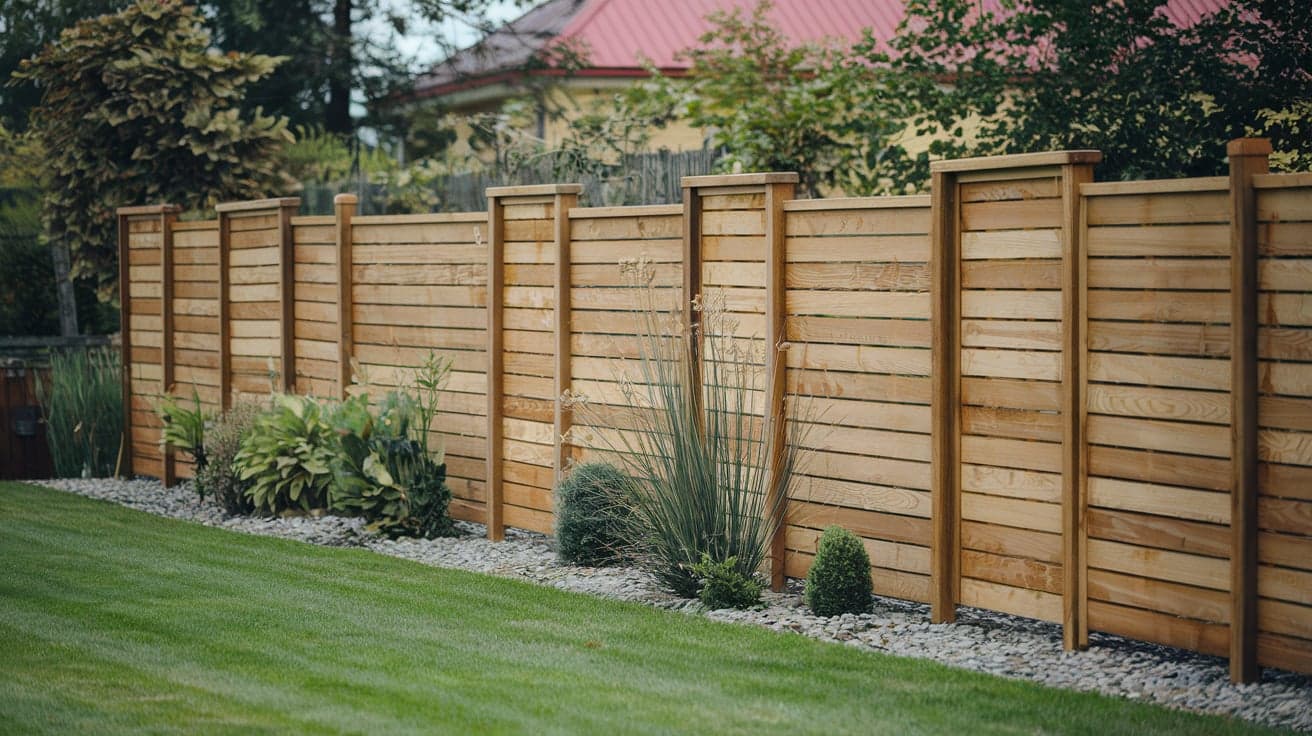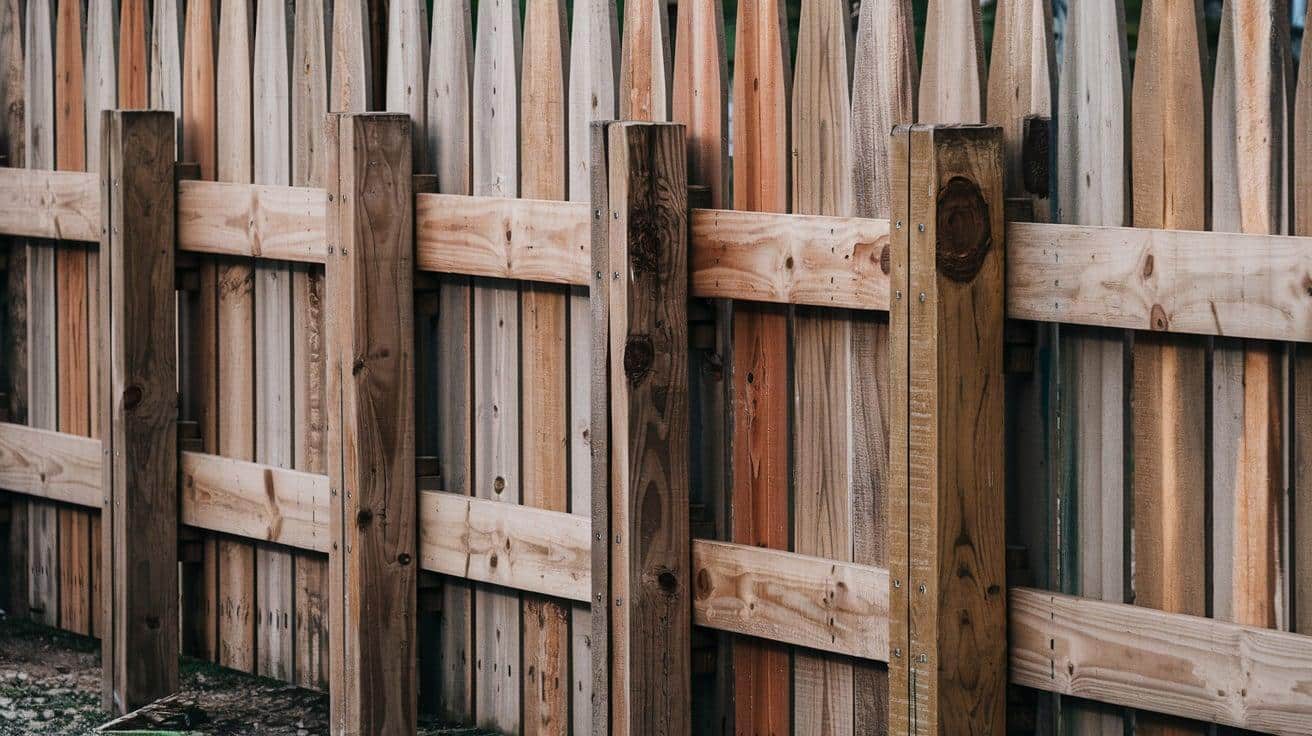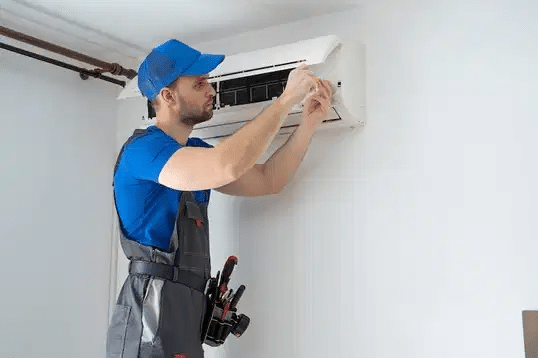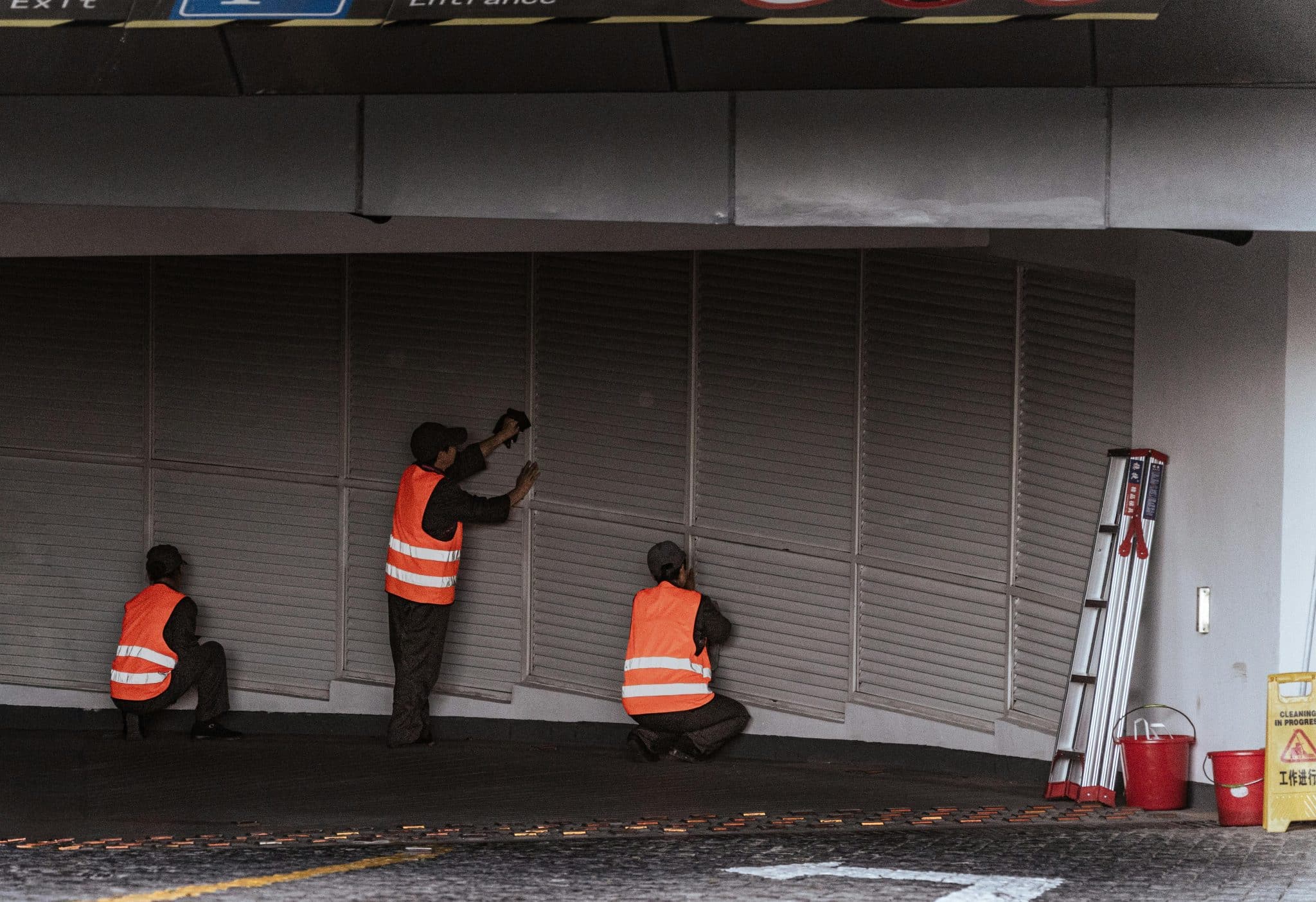Are you looking for a fence that offers complete privacy without sacrificing looks? A board on board fence might be the perfect solution for your home.
Board on board fences use overlapping wooden boards to create a solid barrier that blocks all sight lines while maintaining an attractive appearance from both sides. They’ve become a popular choice for homeowners who want both security and style.
In this guide, we’ll walk you through everything you need to know about board on board fences – from their defining features and material options to costs and installation considerations. You’ll learn why these fences stand out from other styles, what materials work best, and how much you should expect to pay for quality construction.
Whether you’re replacing an old fence or building a new one, this information will help you make smart choices for your property.
What is a Board on Board Fence?
A board on board fence is a fence style that uses wooden boards placed side by side with slight overlaps. This creates a solid wall of wood that stops people from seeing through from either side. The boards are set up to cover any gaps, giving homes total privacy.
The boards fit together specially. One board goes up, then the next board is placed so it covers part of the first one. This creates the “board on board” look that many homeowners like. The pattern is simple but works well.
Over time, this fence style grew popular in many homes. People began to use them in the 1960s and 1970s when privacy became more important in growing towns. Since then, many homeowners have chosen this design for their yards.
Unlike picket fences, which have spaces between boards, the board-on-board style leaves no gaps. It’s also different from shadowbox fences, which have boards on both sides with space between them. And it’s not like stockade fences, which use whole logs placed side by side.
Choosing the Right Type of Board on Board Fence
| Type of Fence | Description |
|---|---|
| Standard Board on Board | The most common style with evenly spaced, overlapping vertical boards. |
| Double Board on Board | Two sets of overlapping boards for extra privacy and a more robust look. |
| Horizontal Board on Board | Boards are placed horizontally, offering a modern twist while maintaining privacy. |
| Shadow Board on Board | A style where alternating boards are staggered for an interesting visual effect while retaining the overlap for privacy. |
What Makes a Board-on-Board Fence Unique: Key Features
A board-on-board fence stands out due to its overlapping boards, which provide maximum privacy, durability, and sleek, modern visuals. This design offers a solid, double-sided look that is both functional and visually appealing, making it a popular choice for homeowners seeking privacy and style.
1. Overlapping Boards
The main feature of a board-on-board fence is how the boards overlap each other. Each wooden board sits partly on top of the board next to it. This method blocks all sight lines through the fence. When you look at the fence from any angle, you cannot see through it. This makes it perfect for homes where privacy matters most.
2. Double-Sided Design
A board-on-board fence looks the same from both sides. This equal view makes it a good choice for property lines shared with neighbors. Neither side gets the “good side” or the “bad side” of the fence. You and your neighbor see the same clean, finished look, which helps keep peace with those living next door.
3. Aesthetic Flexibility
You can make a board-on-board fence look many ways. The boards can stand up straight in a vertical pattern. Or they can run side to side in a horizontal style. You can pick from wide boards, narrow boards, or a mix of both. Some fences use flat tops while others have shaped ends. The choices fit with many home styles.
4. Sturdy Construction
These fences stand firm against time and weather. The posts go deep into the ground and hold the weight of the boards. The boards connect with strong screws or nails that grip tight. The overlap of boards adds more strength to the whole fence. This solid build means fewer repairs over many years.
5. Spacing and Gaps
The boards in this fence type sit close together with tiny gaps. The overlap means that even these small spaces don’t let people see through. Some gaps allow air to flow, which helps the fence withstand strong winds. But these gaps are placed so that they never create a clear view through the fence.
Materials Used for Board-on-Board Fences
- Cedar: Cedar wood offers a rich, warm look, and its natural oils fight off bugs and rot. It costs more than basic wood but lasts longer and keeps its good looks with less work.
- Redwood: Redwood withstands tough weather and resists pests without chemical treatments. It has a higher price tag but rewards you with its beauty and long life.
- Pine (Pressure-Treated): This budget-friendly option receives special chemical treatments to prevent decay. It requires more upkeep but saves money when you first build your fence.
- Douglas Fir: This strong wood handles weight well and costs less than cedar or redwood. It needs regular staining and sealing to stay in good shape over the years.
How Much Does a Board-on-Board Fence Really Cost?
Factors Affecting Cost
When planning a board-on-board fence, several factors impact the final bill. The materials you choose make a big difference—wood costs less than newer options like vinyl or composite. The size matters, too, as taller fences need more materials and work.
The total length adds up quickly, with each foot adding to your total cost. Your location also plays a part, as prices for materials and workers change from one area to another. The time of year might also affect your price.
Fence builders often charge more during the busy spring and summer months. The shape of your yard makes a difference, too – flat land is easier to work with than slopes or rocky ground. If you need to remove an old fence first, that adds more to your bill.
Average Costs
| Material Type | Material Cost (per linear foot) | Labor Cost (per linear foot) | Total Cost Range (per linear foot) |
|---|---|---|---|
| Cedar Wood | $15-$25 | $10-$15 | $25-$40 |
| Redwood | $20-$30 | $10-$15 | $30-$45 |
| Pressure-Treated Pine | $10-$20 | $10-$15 | $20-$35 |
| Douglas Fir | $12-$22 | $10-$15 | $22-$37 |
| Composite | $25-$35 | $12-$18 | $37-$53 |
| Vinyl | $20-$40 | $12-$18 | $32-$58 |
| Metal/Wood Hybrid | $30-$45 | $15-$20 | $45-$65 |
Legal Considerations for Installing a Board on Board Fence
- Zoning Laws: Check your town’s zoning laws, as most areas limit fence heights to 6 feet in backyards and 4 feet in front yards.
- Permit Requirements: Many cities and towns require a building permit before you start any fence construction, often with a small fee.
- Property Lines: Always verify your exact property lines with a survey before building to avoid costly disputes with neighbors.
Pitfalls to Avoid
| Common Mistake | Description |
|---|---|
| Incorrect Post Placement | Ensure posts are spaced correctly and deep enough in the ground. |
| Not Sealing the Wood | Wood that isn’t sealed can absorb moisture, leading to rot. |
| Skipping the Research | Ensure that the fence style and material suit your local climate and maintenance capabilities. |
| Poor Maintenance Practices | Failing to clean, treat, or inspect the fence regularly will decrease its lifespan. |
Conclusion
A board-on-board fence offers a winning mix of privacy, good looks, and lasting strength. When you choose this fence style, you get a barrier that works equally well for all sides of your yard.
The key points to remember include complete privacy from overlapping boards, an equal look from both sides, and the many ways to make it fit your home’s style. Materials range from budget-friendly pine to long-lasting cedar, with non-wood options like vinyl for those who want less upkeep.
Cost matters, too—expect to pay between $20 and $65 per foot, depending on the materials you pick and who does the work. While not the cheapest option, the value comes in the fence’s long life and the privacy it gives your outdoor space.
Before you start, check local rules about fence height and placement. Then, consider what matters most to you: budget, looks, or low maintenance.
With the right planning, your board-on-board fence will stand strong and look good for many years to come.
Frequently Asked Questions
How Long Does It Take to Install a Board-on-Board Fence?
For a typical home yard (150-200 feet), most pros can finish the job in 2-3 days.
Can I Add a Board-on-Board Fence to a Sloped Yard?
Yes, the fence can follow the slope or use a stepped design, with each section sitting level but at different heights.
Will a Board-on-Board Fence Affect My Property Value?
Most well-built wood fences add to home value, often returning 50-70% of their cost when you sell.
How Far Apart Should Posts Be Placed for a Sturdy Board-on-Board Fence?
For best results, place fence posts 6-8 feet apart and set them at least 2 feet deep in the ground.














